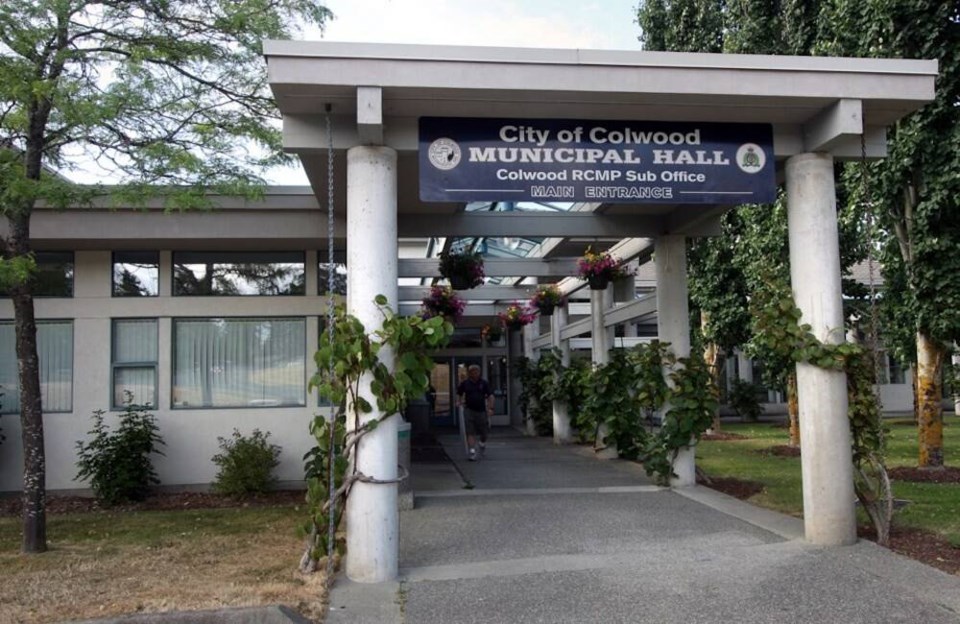A move to nearly double the salaries of the mayor and councillors in Colwood — to $61,000 a year for the mayor and $30,000 for councillors — is expected to pass at a formal vote on Monday.
Colwood Mayor Rob Martin, who supported a motion this week to bump up the pay packages, says the goal is to bring fresh faces and ideas to the council table. Municipal elections are scheduled for Oct. 15.
“I would have loved to have this conversation two years ago, but in retrospect I think it’s the perfect time,” said Martin, who is facing a challenge from Coun. Doug Kobayashi for the mayor’s job. “Let’s get it out there. Hopefully, it motivates people to consider public office.
“If the community strongly feels they are not getting value for the dollar, let’s have that conversation during the election period.”
In January, a task force of five Colwood residents — reduced to four after the initial meeting — decided on a per-capita formula for the increases, based on practices in B.C. communities of similar size and compensation for other municipal councils in the region.
The mayor currently makes $32,992.14 and councillors $16,496.07. Based on Colwood’s population of about 19,000, that puts the salary at $1.74 per resident for the mayor.
The task force recommended raising that per-capita stipend to $3.22. That would mean the mayor’s salary would increase to $61,054.42 and councillors’ — kept to half the mayor’s compensation — to $30,527.21. The pay raise would take effect on Jan. 1 if council votes in favour on Monday.
The committee of the whole motion passed 5-2, with Kobayashi and Coun. Cynthia Day opposed.
Coun. Mike Baxter said he was in favour of pay increases but would prefer that they be phased in over the next term.
Saying the pay raise is too rich, Kobayashi wants council to adopt increases based on Union of B.C. Municipalities guidelines that also consider operating-budget size, growth rates and scope of services, among other criteria. If those factors were taken into account, he said, the mayor would be making about $44,000 and councillors $22,000.
“There’s no way you’re going to sell this [85% increase] to the public,” he told the committee of the whole.
In a statement after the meeting, Kobayashi said he was disappointed the decision was made in a late-summer meeting with no members of the public present, while families struggle with rising costs.
“I’ve visited over 800 homes so far … most of the people I meet are concerned about rising inflation and being able to maintain their quality of life without having to cut too many more corners,” said Kobayashi. “How can we ask Colwood citizens to absorb more costs to pay for a council that still hasn’t delivered on vital community social planning objectives? It’s just not fair and folks are fed up.”
The citizen task force used 11 communities for comparison to reach its per capita median of $3.22 for mayoral compensation — Metchosin, North Saanich, View Royal, Oak Bay, Esquimalt, Sooke, Sidney, Cranbrook, Port Alberni, Salmon Arm and White Rock.
Compensation in those communities ranged from Oak Bay’s mayor making $34,415 a year ($1.91 per capita for about 18,000 residents) to Metchosin’s mayor earning $27,450 ($5.42 per capita for just over 5,000 residents).
Outliers at the high end — Saanich and Victoria — and low end — Pitt Meadows and Langford — were excluded from the formula.
The task force noted that an increase in pay would not be out of line considering the amount of infrastructure and new development underway in Colwood.
Last year, mayor and councillors were required to attend 72 meetings, including 23 regular and special meetings of council and 22 committee of the whole meetings. They also attend Capital Regional District committees, city special events and workshops and conferences.
Martin said the raises are about the next council, not the current one.
“The truth of the matter is myself and Coun. Kobayashi both announced we were running before these numbers were there. So it’s not a deciding factor for us, but it is a deciding factor for a lot of people who are considering adding value to this city.”
Martin said he was recently speaking with two University of Victoria students who are serious about running for council, but “struggling” because they need a part-time job. “That part-time job was not going to be council at the old reimbursement rate,” he said.
Day, however, took issue with the part of the task force report that bases annual salary increases on population growth, which could create a “bias” toward development.
“Tying our remuneration to the population of our community, I think, is unfair,” Day told the committee of the whole. “The population doesn’t really affect the work that we do. It does a little, but I think we can accomplish that in a better way and it wouldn’t leave that distasteful perception that the more people we can rezone Colwood for, the more money the council will make.”
Coun. Michael Baxter said being a councillor doesn’t just involve meetings but preparation, time spent with the public and city staff and looking to future issues and projects.
“This is a more than a full-time job … I struggle to understand how anyone who also has a full-time time job can do this and remain sane,” said Baxter, adding higher remuneration might attract a more diverse group of people to council.
“If you look around the table, where are the people with young children? Let’s face it, most of us here are fairly well along in years.
“We’re not a representative sample of this community … we need more diversity in that sense.”



